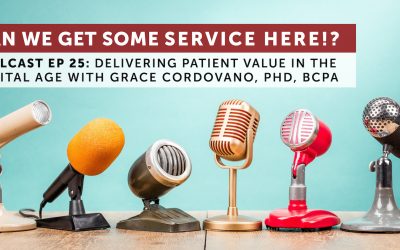Key Takeaways
- Current vendor solutions are limited and generally require additional advisory services.
- Few available solutions offer workflow integration, especially across post-acute care settings, to assist in the execution of bundled episodes.
- Larger HCOs will weather the shift to bundled payments more easily than their smaller counterparts, especially as bundled payments begin to scale across multiple service lines.

Bundled payments have been looming on the horizon for healthcare organizations (HCOs) at varying degrees of intensity for at least the last thirty years. As healthcare costs have continued to rise, payers and providers are increasingly viewing bundled payments as a viable alternative to fee for service (FFS) payment structures.
Recognizing that this trend is here to stay, we authored the upcoming report, Bundled Payments: Current Strategies and Tools, to help HCOs understand the impetus behind bundled payments as well as provide a detailed perspective on how healthcare information technology (HIT) vendors are prepared to support this payment modality transition.
The Drive for Bundled Payments
Bundled payments are positioned to serve as a transition between FFS and capitation. By definition, a bundled payment links multiple provider payments into one care management and payment system during a specific episode of patient care during a defined period of time. There are two types of bundles: prospective and retrospective.
A retrospective bundle incorporates a reconciled budget with the payer or “convener” as a financial integrator of the fees paid out instead of putting the responsibility upon one provider. This arrangement is built upon a FFS system and is retrospective because providers first receive their usual FFS payments, and then they receive an additional payment after their total costs are assessed and if cost savings were generated. However, cost assessments can take a year or more to complete after services are initially provided.
A prospective bundle pays a fixed price for a set of services covered in the bundle before all of the services are rendered. An average cost per episode of care is determined based on historical data and/or regional costs and payment is delivered to providers when an episode is initiated, rather than waiting until the entire episode has been completed. Adjustments to payments are made after the fact to account for outliers, excluded episodes, and other factors.
Retrospective payment bundles are the most widespread bundled payment system primarily due to the abundance of participation in the Bundled Payments for Care Improvement (BCPI) Initiative and the Comprehensive Care for Joint Replacement (CJR) model. Retrospective payments for bundles are also easier to understand, administer, and execute, which is why they comprise the majority of bundled payment financing arrangements to date.
A CMS-led Initiative
CMS is still navigating how to implement this payment structure while not alienating providers, and BPCI was an attempt to find a middle ground that is palatable to providers while capitalizing on the cost savings bundled payments offer payers.
Unfortunately, determining this middle ground has led to CMS sending conflicting messages to the industry. In late 2017, CMS rescinded rule changes that required mandatory bundled payments for providers to test the effect bundled payments would have on cardiac and orthopedic care. CMS noted that responses from providers to the mandatory bundled payments cited concerns over both the process by which costs for episodes were determined as well as the ability for smaller HCOs to comply with the process.
Despite these setbacks, CMS is not withdrawing support from bundled payments as a whole and has instead created the BPCI-Advanced, a voluntary iteration of BPCI with the same goal of aligning incentives among health care providers. Early adoption of the BCPI-Advanced program has been robust although it remains to be seen how many of these providers might exit early next year. Additionally, HHS Secretary Azar indicated last month that mandatory bundles are coming in the near future for radiation oncology and possibly other providers as alternative payment models.
Commercial payers have shown interest in bundled payments, but have been slow to introduce the practice. Although we have seen increased adoption from some payers, the general consensus is that these organizations will wait until the concept is proven before devoting resources to the change. We might have to wait until bundled payments are once again mandated by CMS before commercial payers adopt the model.
Provider Reservations
While the attitude of providers towards bundled payments could be best described as “wary,” there is still opportunity for healthcare providers to lower their costs while improving the standard of care. Yet, success with bundled payments requires close coordination between multiple providers over a varying timespan, something that many providers struggle with.
In order for bundled payments to work for both patient and provider, an HCO needs to have the ability to identify who is eligible for bundled payments early in the treatment cycle through monitoring and tracking. They also need to have a network and processes in place to engage affiliated and community providers that are necessary to the bundled payment process. Not surprisingly, many HCOs are hesitant to invest the organizational resources necessary to establish this level of collaboration.
Specialty physician groups that are only focused on engaging in one or two retrospective bundles will be able to change more rapidly but over the longer term, it will be harder for smaller HCOs to effectively scale bundled payments across multiple services lines within their organization. Another advantage larger systems have is systems and processes for dealing with post-acute care needs that are critical for succeeding in bundled payments.
In general, large HCOs with wide networks and established reporting and monitoring processes are better equipped to handle the transition to bundled payments and effectively scale these program although several specific factors (e.g., episode type, target price, exclusion criteria, risk adjustment) will affect how a provider performs.
The Tools for Bundled Payments
Our report focuses primarily on identifying the IT environment that supports, and will support, bundled payment plans. We were able to identify a number of key issues that software solutions must address, including patient tracking, care process redesign, and physician engagement. As of the writing of this report, no vendor offers a comprehensive solution to the myriad reporting and management challenges that bundled payments present.
We did identify commercially available solutions to deal with cost and quality reporting requirements inherent in the bundled payment process. Unfortunately, HCOs are going to have to develop piecemeal processes that incorporate multiple systems until vendors are able to provide a robust comprehensive solution. We expect that as bundled payments garner more support and interest, HIT vendors will recognize the market opportunity and develop systems to specifically address these issues.
Conclusion
The question is not whether bundled payments are going to see greater utilization, but rather to what extent will bundled payments affect healthcare payers and providers? Providers especially will need to have a plan and processes in place to reduce risk to their revenue streams as bundled payments become more ubiquitous.
Our report, Bundled Payments: Current Tools and Strategies, outlines how providers can navigate these changes and identifies IT solutions that may assist them. It provides detailed insight into what bundled payments are, how to execute them, and the challenges associated with their orchestration. Furthermore, it contains comprehensive vendor profiles and evaluations of the solutions they offer, which we hope will assist providers as they prepare for this transition.
On January 30, 2019, we are hosting a webinar on this topic. To attend or just be on the list for the recording, please click here to register.




0 Comments